Idban Alamzadeh
Channel Estimation with Hybrid Reconfigurable Intelligent Metasurfaces
Jun 08, 2022

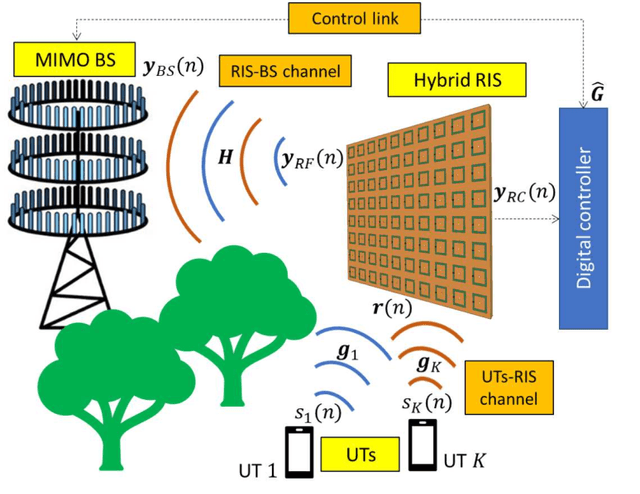
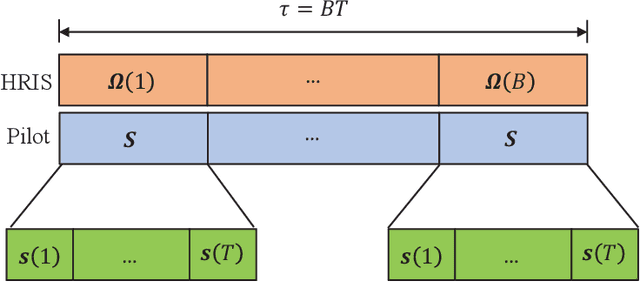
Abstract:Reconfigurable Intelligent Surfaces (RISs) are envisioned to play a key role in future wireless communications, enabling programmable radio propagation environments. They are usually considered as almost passive planar structures that operate as adjustable reflectors, giving rise to a multitude of implementation challenges, including the inherent difficulty in estimating the underlying wireless channels. In this paper, we focus on the recently conceived concept of Hybrid Reconfigurable Intelligent Surfaces (HRISs), which do not solely reflect the impinging waveform in a controllable fashion, but are also capable of sensing and processing an adjustable portion of it. We first present implementation details for this metasurface architecture and propose a convenient mathematical model for characterizing its dual operation. As an indicative application of HRISs in wireless communications, we formulate the individual channel estimation problem for the uplink of a multi-user HRIS-empowered communication system. Considering first a noise-free setting, we theoretically quantify the advantage of HRISs in notably reducing the amount of pilots needed for channel estimation, as compared to the case of purely reflective RISs. We then present closed-form expressions for the MSE performance in estimating the individual channels at the HRISs and the base station for the noisy model. Based on these derivations, we propose an automatic differentiation-based first-order optimization approach to efficiently determine the HRIS phase and power splitting configurations for minimizing the weighted sum-MSE performance. Our numerical evaluations demonstrate that HRISs do not only enable the estimation of the individual channels in HRIS-empowered communication systems, but also improve the ability to recover the cascaded channel, as compared to existing methods using passive and reflective RISs.
Channel Estimation with Simultaneous Reflecting and Sensing Reconfigurable Intelligent Metasurfaces
Feb 11, 2022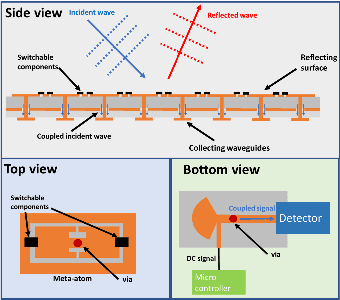
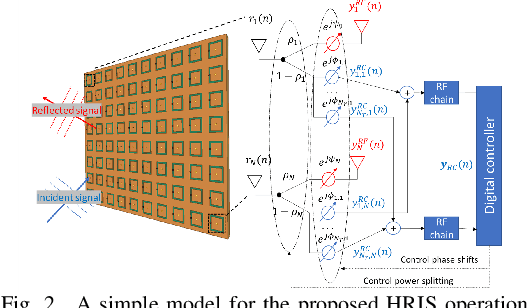
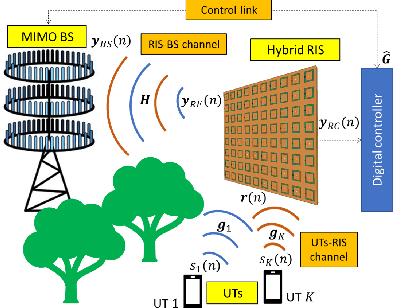
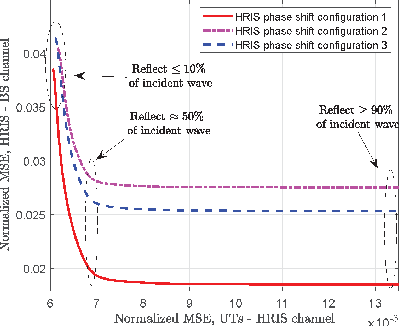
Abstract:Reconfigurable Intelligent Surfaces (RISs) are envisioned to play a key role in future wireless communications, enabling programmable radio propagation environments. They are usually considered as nearly passive planar structures that operate as adjustable reflectors, giving rise to a multitude of implementation challenges, including an inherent difficulty in estimating the underlying wireless channels. In this paper, we propose the concept of Hybrid RISs (HRISs), which do not solely reflect the impinging waveform in a controllable fashion, but are also capable of sensing and processing a portion of it via some active reception elements. We first present implementation details for this novel metasurface architecture and propose a simple model for its operation, when considered for wireless communications. As an indicative application of HRISs, we formulate and solve the individual channels identification problem for the uplink of multi-user HRIS-empowered systems. Our numerical results showcase that, in the high signal-to-noise regime, HRISs enable individual channel estimation with notably reduced amounts of pilots, compared to those needed when using a purely reflective RIS that can only estimate the cascaded channel.
Hybrid Reconfigurable Intelligent Metasurfaces: Enabling Simultaneous Tunable Reflections and Sensing for 6G Wireless Communications
Apr 10, 2021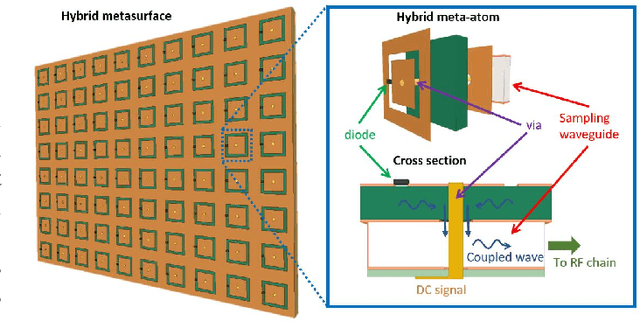


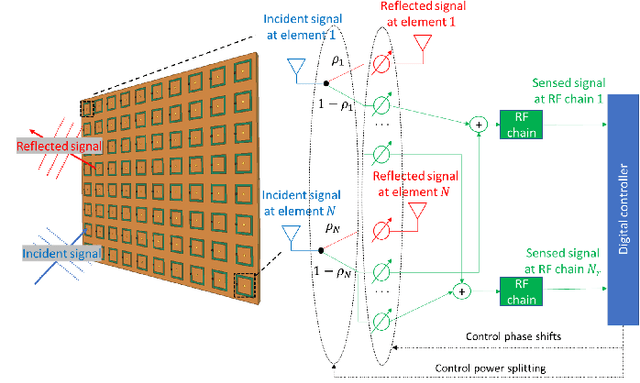
Abstract:Current discussions on the sixth Generation (6G) of wireless communications are envisioning future networks as a unified communication, sensing, and computing platform that intelligently enables diverse services, ranging from immersive to mission critical applications. The recently conceived concept of the smart radio environment, enabled by Reconfigurable Intelligent Surfaces (RISs), contributes towards this intelligent networking trend, offering programmable propagation of information-bearing signals, which can be jointly optimized with transceiver operations. Typical RIS implementations include metasurfaces with nearly passive meta-atoms, allowing to solely reflect the incident wave in an externally controllable way. However, this purely reflective nature induces significant challenges in the RIS orchestration from the wireless network. For example, channel estimation, which is essential for coherent communications in RIS-empowered wireless networks, is quite challenging with the available RIS designs. This article introduces the concept of Hybrid reflecting and sensing RISs (HRISs), which enables metasurfaces to reflect the impinging signal in a controllable manner, while simultaneously sense a portion of it. The sensing capability of HRISs facilitates various network management functionalities, including channel estimation and localization. We discuss a hardware design for HRISs and detail a full-wave proof-of-concept. We highlight their distinctive properties in comparison to reflective RISs and active relays, and present a simulation study evaluating the HRIS capability for performing channel estimation. Future research challenges and opportunities arising from the concept of HRISs are presented.
 Add to Chrome
Add to Chrome Add to Firefox
Add to Firefox Add to Edge
Add to Edge